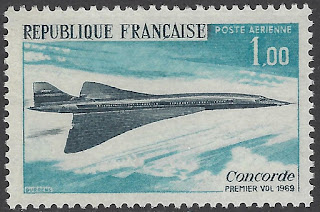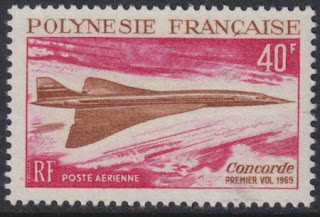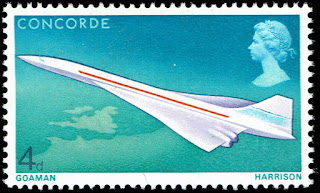1820 Born: Multatuli, Dutch writer (d. 1887)
Eduard Douwes Dekker (2 March 1820 – 19 February 1887), better known by his pen name Multatuli (from Latin multa tulī, "I have suffered much"), was a Dutch writer best known for his satirical novel Max Havelaar (1860), which denounced the abuses of colonialism in the Dutch East Indies (today's Indonesia). He is considered one of the Netherlands' greatest authors.
Determined to expose the scandals he had witnessed during his years in the Dutch East Indies, Douwes Dekker began to write newspaper articles and pamphlets. Little notice was taken of these early publications until, in 1860, he published his satirical anticolonialist novel Max Havelaar: The Coffee Auctions of the Dutch Trading Company under the pseudonym Multatuli. Douwes Dekker's pen name is derived from the Latin phrase multa tuli, meaning "I have suffered much" (or more literally: "I have borne much"). It refers both to himself and to the victims of the injustices he saw.
Douwes Dekker was one of Sigmund Freud's favorite writers; his name heads a list of 'ten good books' that Freud drew up in 1907. Several other writers from different generations were appreciative of Multatuli, like Marx, Anatole France, Hermann Hesse, Willem Elsschot, Thomas and Heinrich Mann, and most of the first-wave feminists.
In June 2002, the Dutch Maatschappij der Nederlandse Letterkunde (Society of Dutch Literature) proclaimed Multatuli the most important Dutch writer of all time.
The annual Multatuli Prize, a Dutch literary prize, is named in his honor. The literary award Woutertje Pieterse Prijs is named after the character Woutertje Pieterse in Multatuli's De geschiedenis van Woutertje Pieterse.
The Mutatuli Museum is located in Amsterdam at Korsjespoortsteeg 20, where Eduard Douwes Dekker was born.
Stamp issued in the Netherlands depicting Multatuli
1855 – Alexander II becomes Tsar of Russia.
Alexander II (29 April 1818 – 13 March 1881) was the emperor of Russia from 2 March 1855 until his assassination on 13 March 1881. He was also the king of Poland and the grand duke of Finland.
Alexander's most significant reform as emperor was emancipation of Russia's serfs in 1861, for which he is known as Alexander the Liberator. The tsar was responsible for other reforms, including reorganizing the judicial system, setting up elected local judges, abolishing corporal punishment, promoting local self-government through the zemstvo system, imposing universal military service, ending some privileges of the nobility, and promoting university education. After an assassination attempt in 1866, Alexander adopted a somewhat more reactionary stance until his death.
Alexander pivoted towards foreign policy and sold Alaska to the United States in 1867, fearing the remote colony would fall into British hands if there were another war. He sought peace, moved away from bellicose France when Napoleon III fell in 1871, and in 1872 joined with Germany and Austria in the League of the Three Emperors that stabilized the European situation. Despite his otherwise pacifist foreign policy, he fought a brief war with the Ottoman Empire in 1877–78, pursued further expansion into Siberia and the Caucasus, and conquered Turkestan. Although disappointed by the results of the Congress of Berlin in 1878, Alexander abided by that agreement. Among his greatest domestic challenges was an uprising in Poland in 1863, to which he responded by stripping that land of its separate constitution and incorporating it directly into Russia. Alexander was proposing additional parliamentary reforms to counter the rise of nascent revolutionary and anarchistic movements when he was assassinated in 1881.
Russian stamps depicting Alexander II
1855 Died: Nicholas I, Russian emperor (b. 1796)
Nicholas I (6 July 1796 – 2 March 1855) reigned as Emperor of Russia from 1825 until 1855. He was also the King of Poland and Grand Duke of Finland. He has become best known as a reactionary whose controversial reign was marked by geographical expansion, economic growth and massive industrialisation on the one hand, and centralisation of administrative policies and repression of dissent in another. Nicholas had a happy marriage that produced a large family; all of their seven children survived childhood. His biographer Nicholas V. Riasanovsky says that Nicholas displayed determination, singleness of purpose, and an iron will, along with a powerful sense of duty and a dedication to very hard work. He saw himself as a soldier—a junior officer totally consumed by spit and polish. A handsome man, he was highly nervous and aggressive. Trained as an engineer, he was a stickler for minute detail. In his public persona, says Riasanovsky, "Nicholas I came to represent autocracy personified: infinitely majestic, determined and powerful, hard as stone, and relentless as fate." He was the younger brother of his predecessor, Alexander I. Nicholas inherited his brother's throne despite the failed Decembrist revolt against him and went on to become the most reactionary of all Russian leaders.
Nicholas I was instrumental in helping to create an independent Greek state, and resumed the Russian conquest of the Caucasus by seizing Iğdır Province and the remainder of modern-day Armenia and Azerbaijan from Qajar Persia during the Russo-Persian War of 1826–1828. He ended the Russo-Turkish War of 1828–1829 successfully as well. Later on, however, he led Russia into the Crimean War (1853–1856), with disastrous results. Historians emphasize that his micromanagement of the armies hindered his generals, as did his misguided strategy. Fuller notes that historians have frequently concluded that "the reign of Nicholas I was a catastrophic failure in both domestic and foreign policy." On the eve of his death, the Russian Empire reached its geographical zenith, spanning over 20 million square kilometers (7.7 million square miles), but had a desperate need for reform.
1969 – In Toulouse, France, the first test flight of the Anglo-French Concorde is conducted.
Russian stamps depicting Nicholas I
1904 Born: Dr. Seuss, American children's book writer, poet, and illustrator (d. 1991)
Theodor Seuss "Ted" Geisel (March 2, 1904 – September 24, 1991) was an American children's author, political cartoonist, illustrator, poet, animator, screenwriter, and filmmaker. He is known for his work writing and illustrating more than 60 books under the pen name Dr. Seuss. His work includes many of the most popular children's books of all time, selling over 600 million copies and being translated into more than 20 languages by the time of his death.
Geisel adopted the name "Dr. Seuss" as an undergraduate at Dartmouth College and as a graduate student at Lincoln College, Oxford. He left Oxford in 1927 to begin his career as an illustrator and cartoonist for Vanity Fair, Life, and various other publications. He also worked as an illustrator for advertising campaigns, most notably for FLIT and Standard Oil, and as a political cartoonist for the New York newspaper PM. He published his first children's book And to Think That I Saw It on Mulberry Street in 1937. During World War II, he took a brief hiatus from children's literature to illustrate political cartoons, and he also worked in the animation and film department of the United States Army where he wrote, produced or animated many productions – both live-action and animated – including Design for Death, which later won the 1947 Academy Award for Best Documentary Feature.
After the war, Geisel returned to writing children's books, writing classics like If I Ran the Zoo (1950), Horton Hears a Who! (1955), If I Ran the Circus (1956), The Cat in the Hat (1957), How the Grinch Stole Christmas! (1957), and Green Eggs and Ham (1960). He published over 60 books during his career, which have spawned numerous adaptations, including 11 television specials, five feature films, a Broadway musical, and four television series.
Geisel won the Lewis Carroll Shelf Award in 1958 for Horton Hatches the Egg and again in 1961 for And to Think That I Saw It on Mulberry Street. Geisel's birthday, March 2, has been adopted as the annual date for National Read Across America Day, an initiative on reading created by the National Education Association.
US stamps featuring Dr. Seuss and or his characters
The Aérospatiale/BAC Concorde is a British–French turbojet-powered supersonic passenger airliner that was operated until 2003. It had a maximum speed over twice the speed of sound, at Mach 2.04 (1,354 mph or 2,180 km/h at cruise altitude), with seating for 92 to 128 passengers. First flown in 1969, Concorde entered service in 1976 and continued flying for the next 27 years. It is one of only two supersonic transports to have been operated commercially; the other is the Soviet-built Tupolev Tu-144, which operated in the late 1970s.
Concorde was jointly developed and manufactured by Sud Aviation (later Aérospatiale) and the British Aircraft Corporation (BAC) under an Anglo-French treaty. Twenty aircraft were built, including six prototypes and development aircraft. Air France (AF) and British Airways (BA) were the only airlines to purchase and fly Concorde. The aircraft was used mainly by wealthy passengers who could afford to pay a high price in exchange for the aircraft's speed and luxury service. For example, in 1997, the round-trip ticket price from New York to London was $7,995 ($12.7 thousand in 2019 dollars), more than 30 times the cost of the cheapest option to fly this route.
The original programme cost estimate of £70 million met huge overruns and delays, with the program eventually costing £1.3 billion. It was this extreme cost that became the main factor in the production run being much smaller than anticipated. Later, another factor, which affected the viability of all supersonic transport programmes, was that supersonic flight could only be used on ocean-crossing routes, to prevent sonic boom disturbance over populated areas. With only seven airframes each being operated by the British and French, the per-unit cost was impossible to recoup, so the French and British governments absorbed the development costs. British Airways and Air France were able to operate Concorde at a profit, in spite of very high maintenance costs, because the aircraft was able to sustain a high ticket price.
Among other destinations, Concorde flew regular transatlantic flights from London's Heathrow Airport and Paris's Charles de Gaulle Airport to John F. Kennedy International Airport in New York, Washington Dulles International Airport in Virginia and Grantley Adams International Airport in Barbados; it flew these routes in less than half the time of other airliners.
Concorde won the 2006 Great British Design Quest, organised by the BBC and the Design Museum of London, beating other well-known designs such as the BMC Mini, the miniskirt, the Jaguar E-Type, the London Tube map and the Supermarine Spitfire. The type was retired in 2003, three years after the crash of Air France Flight 4590, in which all passengers and crew were killed. The general downturn in the commercial aviation industry after the September 11 attacks in 2001 and the end of maintenance support for Concorde by Airbus (the successor company of both Aérospatiale and BAC) also contributed to the retirement.
Stamps issued by various countries depicting the Concorde














No comments:
Post a Comment